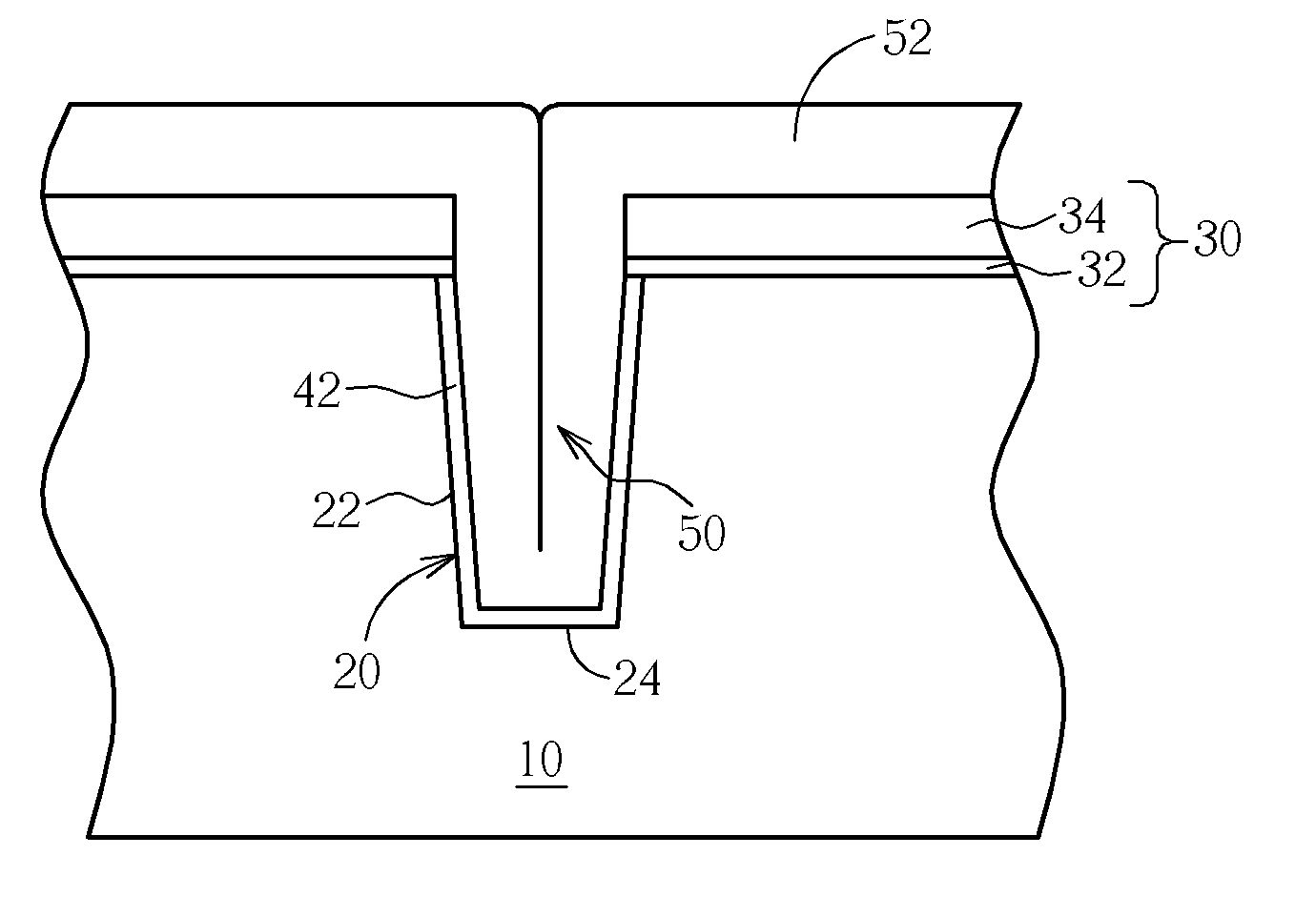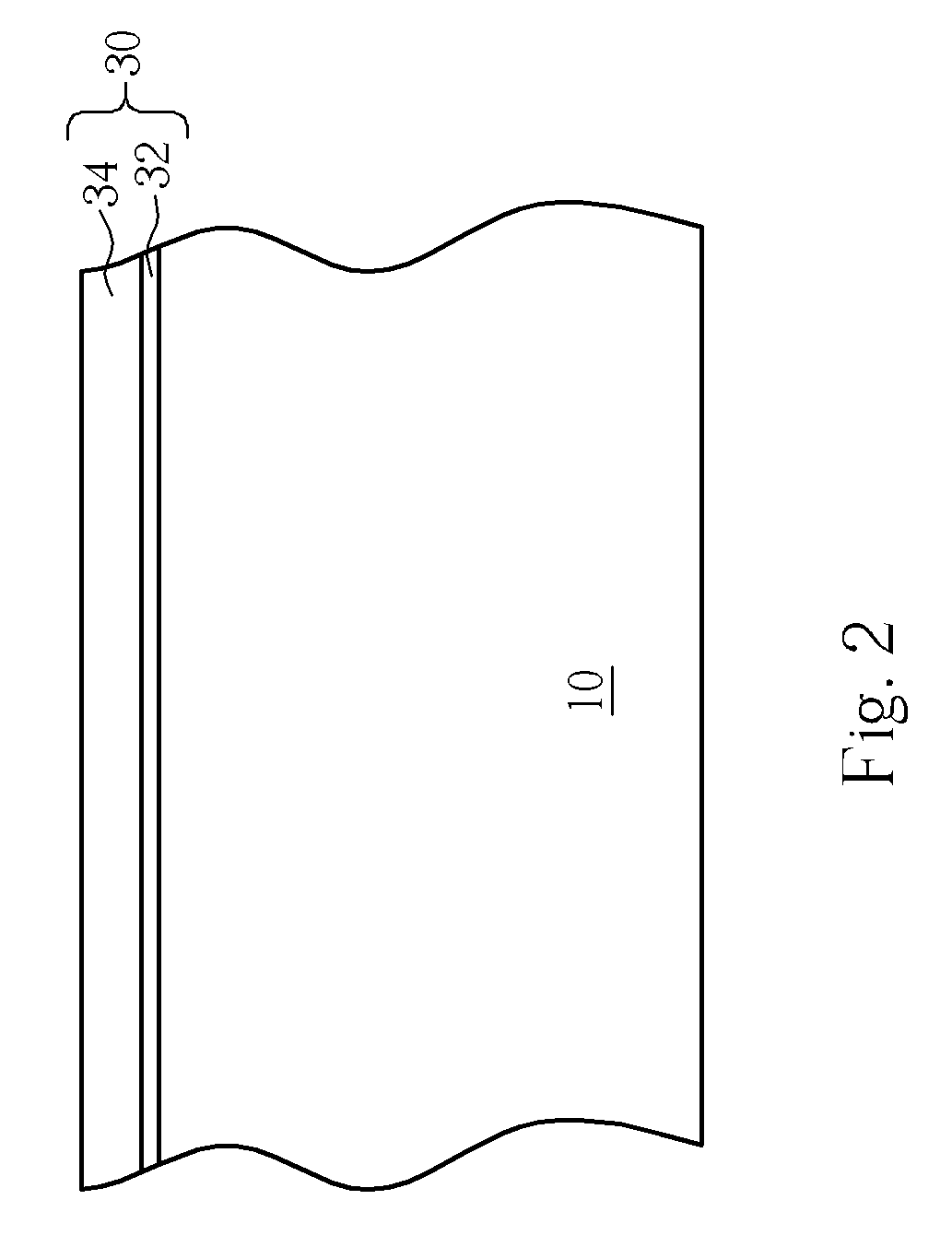Seamless trench fill method utilizing sub-atmospheric pressure chemical vapor deposition technique
a chemical vapor deposition and trench filling technology, applied in the field of microelectronics fabrication, can solve the problems of insufficient film quality of sacvd silicon oxide and its resistance to wet etchant, insufficient step coverage of conventional cvd methods when dealing with high aspect ratio trenches, and inability to meet the requirements of high-quality trenches. , to achieve the effect of eliminating seam defects
- Summary
- Abstract
- Description
- Claims
- Application Information
AI Technical Summary
Benefits of technology
Problems solved by technology
Method used
Image
Examples
Embodiment Construction
[0016] Please refer to FIG. 2 to FIG. 5. First, as shown in FIG. 2, a pad oxide layer 32 having a thickness of about 30-200 angstroms is formed on a semiconductor substrate 10 such as a silicon substrate. The pad oxide layer 32 may be formed by chemical vapor deposition methods or thermal growth. Subsequently, a silicon nitride pad layer 34 having a thickness of about 500-2000 angstroms is deposited on the pad oxide layer 32. The pad oxide layer 32 and the silicon nitride pad layer 34 serve as a mask layer 30.
[0017] As shown in FIG. 3, conventional lithographic and etching processes are carried out to form an opening 36 in the mask layer 30. The opening 36 exposes a portion of the underlying semiconductor substrate 10. Using the mask layer 30 as an etching hard mask, the exposed semiconductor substrate 10 is etched through the opening 36, thereby forming a trench 20 having a trench depth of about 3500-6000 angstroms. This invention is particularly suited for the trench 20 that has ...
PUM
 Login to View More
Login to View More Abstract
Description
Claims
Application Information
 Login to View More
Login to View More - R&D
- Intellectual Property
- Life Sciences
- Materials
- Tech Scout
- Unparalleled Data Quality
- Higher Quality Content
- 60% Fewer Hallucinations
Browse by: Latest US Patents, China's latest patents, Technical Efficacy Thesaurus, Application Domain, Technology Topic, Popular Technical Reports.
© 2025 PatSnap. All rights reserved.Legal|Privacy policy|Modern Slavery Act Transparency Statement|Sitemap|About US| Contact US: help@patsnap.com



